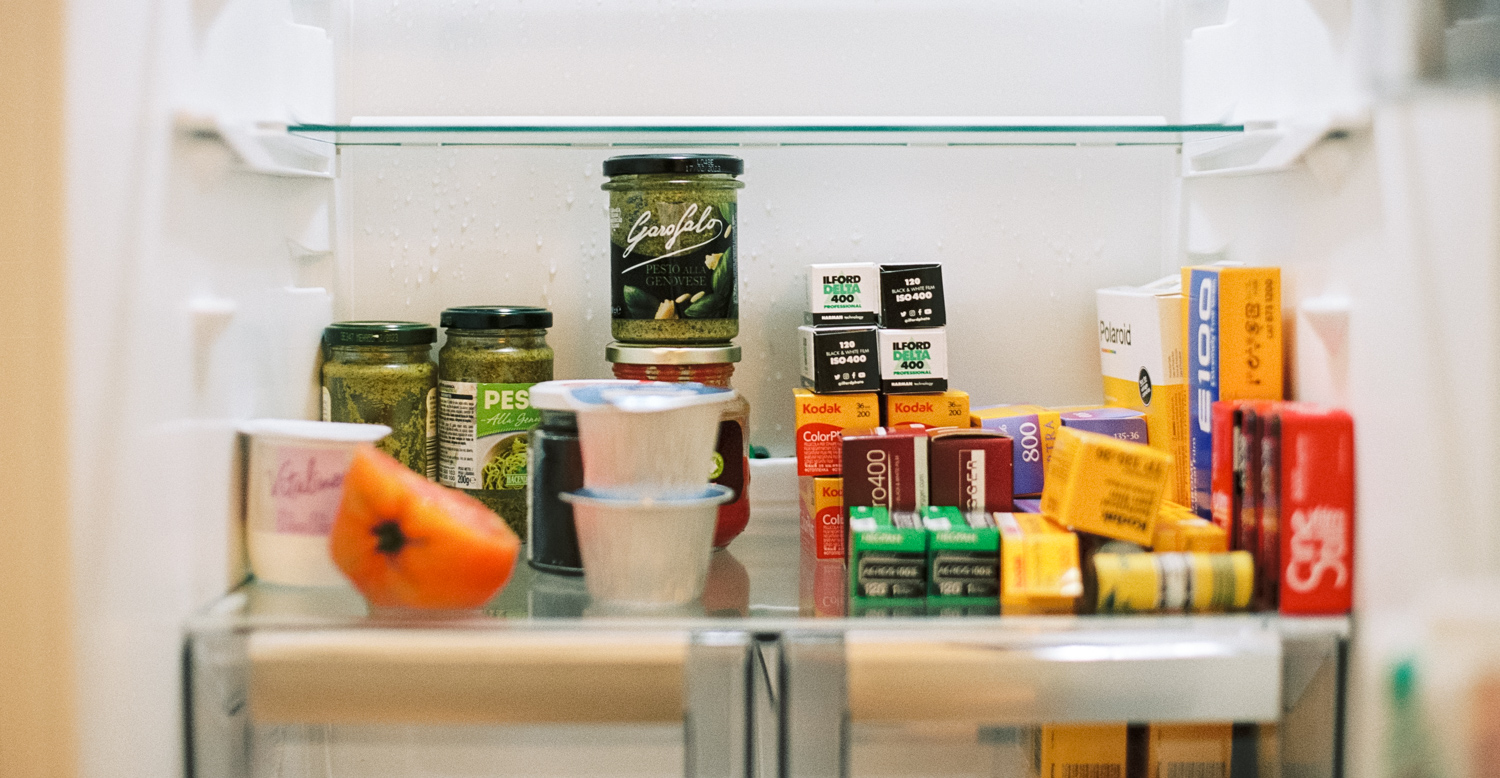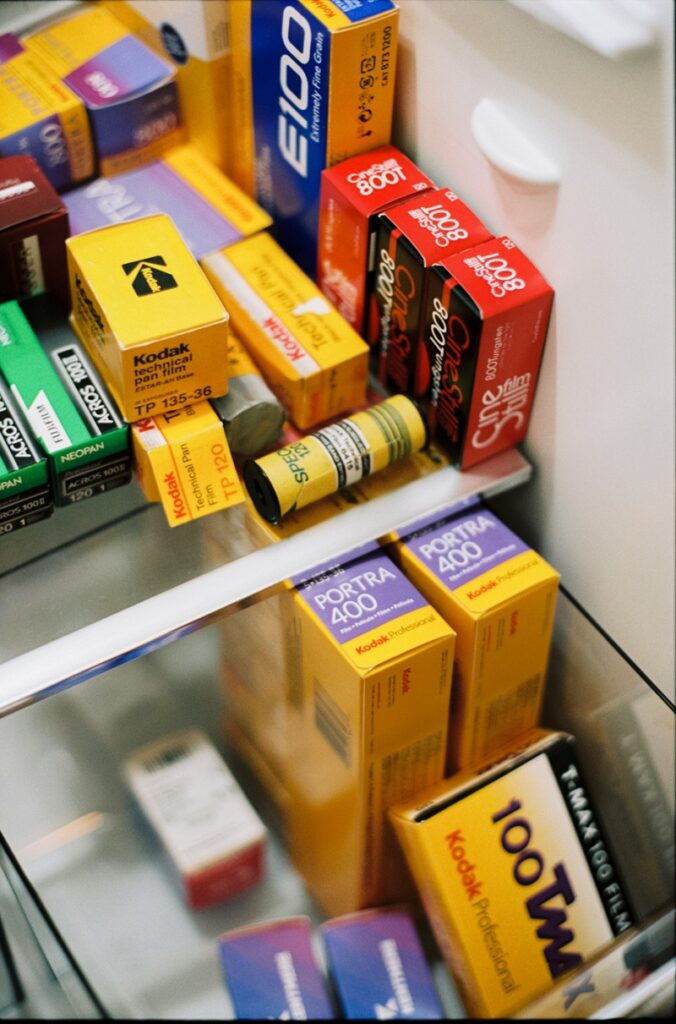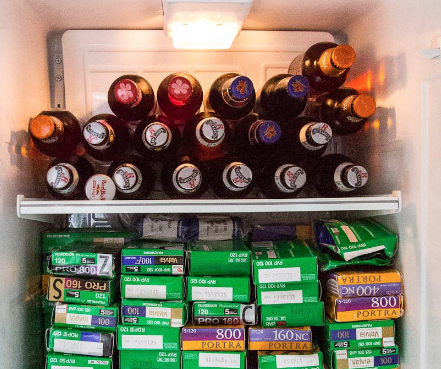How To Store Film In Fridge: Store film in the fridge by placing it in airtight containers or sealed plastic bags to avoid moisture and condensation. Keep it away from perishables to prevent cross-contamination and odors.
Storing film properly is crucial for preserving its quality until you’re ready to use it. The cool temperature of a refrigerator slows down the chemical processes that degrade film, helping to extend its shelf life. By protecting your film from heat, humidity, and light, you ensure that your captured memories or artistic endeavors will develop with the highest fidelity.
Professional photographers and enthusiasts alike swear by refrigeration as the go-to method for film storage, whether it’s black and white, color negative, or slide film. It’s an easy and effective way to maintain the integrity of the film’s emulsion, ensuring the best possible results during processing and development. Remember, film is a delicate medium that deserves careful handling—keeping it cold is part of the craft.

Credit: carmencitafilmlab.com
Preserving Memories: The Importance Of Proper Film Storage
Think of old movies as time capsules—snapshots of precious moments. Storing them right means keeping those memories alive. Here’s how to safeguard film treasures in the fridge.
Keeping Film Away From Heat
Films hate heat. It can damage them beyond repair. Imagine losing cherished memories to a heat wave! Avoid this by storing films in a cool, dry place.
- Refrigerators make perfect homes for films.
- Set the temperature below 13°C (55°F).
- Keep films in their original containers before chilling them.
Humidity And Film Life
Humidity is a silent film killer. High moisture levels lead to fungus and deterioration. Memories fade, and picture quality drops. Prevent this tragedy.
| Do’s | Don’ts |
|---|---|
| Use airtight containers. | Store film in damp places. |
| Include silica gel packets. | Leave films exposed to air. |
| Keep humidity below 50%. | Ignore signs of mould. |
Fridge storage helps combat humidity effectively. A lower humidity level stops mould and preserves film life. Film stored properly will last for decades.

Credit: carmencitafilmlab.com
Choosing The Right Refrigeration For Film
Storing film correctly is vital for maintaining its quality and lifespan. Whether you’re a professional photographer or a hobbyist, picking the proper fridge can make a big difference. In this section, we dive into what makes for optimal film refrigeration.
Optimal Fridge Temperature For Film
Films crave a cool, consistent climate to stay in pristine condition. The ideal temperature range is between 2°C to 8°C (35°F to 46°F). Why does this matter? Film is sensitive to heat and humidity, which can cause color shifts and degrade its quality. Keeping film at this sweet spot protects it from these risks.
Dedicated Film Refrigerators Vs. Household Units
Choosing the right fridge for your film comes down to personal needs and investment. Let’s compare the options.
Dedicated film refrigerators are designed exclusively for film storage. They offer accurate temperature control and humidity regulation, which is critical for film longevity. Although they can be more costly, these units assure professional-grade care for your film stock.
Household units, on the other hand, can double as film storage with careful monitoring and regular maintenance. They are more cost-effective but require vigilance to maintain the proper conditions, as they’re not primarily designed for film.
Consider your budget, film usage, and storage needs when picking between a dedicated film fridge or a household fridge. Whatever choice you make, ensure it meets the optimal temperature parameters to preserve your film’s integrity.
Film Types And Their Storage Needs
Storing film correctly is key to preserving precious memories or professional shots. Different film types have unique needs. Learn how to optimize film life in the fridge.
Color Vs. Black And White
Color film is sensitive to temperature changes. It prefers a cool, stable environment. Storing color film in the fridge slows down color fading. Black and white film is more forgiving with temperature shifts. But it still benefits from fridge storage. Keep films in airtight containers to prevent moisture damage.
Negative, Slide, And Instant Film Considerations
- Negative films should be kept cold. The fridge extends their life. Remember to let them warm to room temperature before use.
- Slide films need protection from heat. Their color accuracy is fragile. A fridge can help maintain this.
- Instant films require special care. They hold chemicals that react to temperatures. Keep instant films in the fridge’s vegetable drawer for best results. Avoid freezing.

Credit: www.harrisoncameras.co.uk
The Process Of Storing Film In A Fridge
Preserving photography film is crucial for maintaining image quality. Correct storage can extend its lifespan. A fridge provides cool, stable temperatures that are ideal. This section explores the right way to store film in your fridge.
Step-by-step Storage Guide
- Check expiry dates on film boxes. Record dates if not visible.
- Place films in airtight containers or ziplock bags. This prevents moisture.
- Add desiccants, like silica gel packets, to absorb moisture.
- Label containers with content and date details. Use a permanent marker.
- Set the fridge temperature between 2°C to 8°C (35°F to 46°F).
- Place the film in the main compartment, away from the freezer.
- Before using, let film reach room temperature for about an hour to prevent condensation.
Avoiding Common Mistakes
- Do not freeze the film. It can cause the emulsion to crack.
- Avoid direct sunlight on the fridge. Maintain constant temperature.
- Keep the film dry. Wetness leads to mold and damaged photos.
- Don’t store opened film. Only unopened film maintains quality.
- Remove film from the fridge the day before use. This allows it to slowly adapt.
Maximizing Film Life Through Proper Care
Keeping film fresh is like preserving a fine wine. Proper care can make all the difference. The right storage extends your film’s life. This guide ensures professionals and amateurs alike can get the best out of their film’s lifespan. We’ll talk about defrosting and managing film with care.
Safe Defrosting Techniques
Defrosting your film is crucial before use. Sudden temperature changes cause damage. Follow these steps for safe defrosting:
- Remove the film from the fridge.
- Keep it in its sealed container.
- Let it reach room temperature for several hours.
- Avoid direct sunlight or heat sources.
- Patience is key; do not rush the process.
Managing Film After Refrigeration
After defrosting, handle your film with care. Adhere to these points:
- Check the film for condensation. Ensure it’s dry.
- Load your camera in a dimly lit environment.
- Use the film promptly after reaching room temperature.
- Keep unused film in its canister and return to the fridge.
Remember, every roll is an opportunity to create. Proper aftercare assures peak performance every time.
Dos And Don’ts Of Film Storage
Understanding how to store film in the fridge is essential for photographers. It ensures the longevity and quality of your photographs. Here’s a gentle dive into the dos and don’ts of film storage.
Best Practices Summary
- Do: Keep film in its original packaging
- Do: Place film in airtight containers
- Do: Store at constant, low temperatures
- Do: Use film before the expiration date
- Don’t: Expose to light
- Don’t: Keep near strong odors
- Don’t: Freeze without proper prep
- Don’t: Ignore humidity levels
Common Misconceptions Debunked
| Misconception | Truth |
|---|---|
| All film lasts longer when refrigerated | Most do, but check film type |
| Freezing film is always best | Not without proper steps |
| Expired film is always bad | Some create unique effects |
Frequently Asked Questions For How To Store Film In Fridge
Can Refrigeration Extend Film Shelf Life?
Refrigerating film slows down the chemical reactions that degrade film quality, thus extending its shelf life. It’s especially beneficial for color films and those with high ISO ratings. Keep your films in airtight containers to prevent moisture damage.
What Is The Ideal Fridge Temperature For Film Storage?
The ideal fridge temperature for storing film is between 35°F to 45°F (2°C to 7°C). Consistency is key, so avoid storing film in a fridge that is frequently opened or has fluctuating temperatures, as this may cause condensation and harm the film.
How Should Film Be Packaged Before Refrigeration?
Film should be stored in its original packaging or airtight containers to protect it from humidity and condensation. Some photographers use ziplock bags or plastic containers with tight seals. Ensure the film is at room temperature before opening the container after refrigeration.
What Precautions Are Necessary When Thawing Frozen Film?
Thaw frozen film gradually by moving it from the freezer to the fridge, then to room temperature. Give your film ample time to acclimate, around 12 hours in the fridge, followed by 2 hours at room temperature, to avoid condensation that can spoil the emulsion.
In Conclusion:
Storing film in your fridge can significantly extend its life and preserve quality. Just remember to let it acclimate when taking it out. Whether a casual shooter or a seasoned pro, proper storage ensures your film captures those perfect moments with clarity.
Keep snapping those timeless shots with confidence, knowing your film is stored just right.


